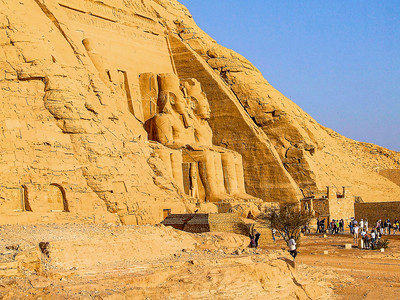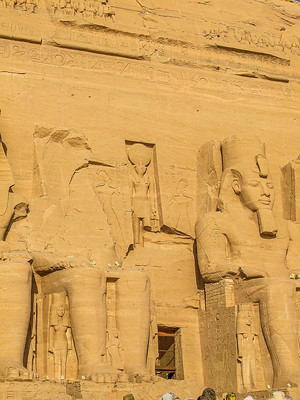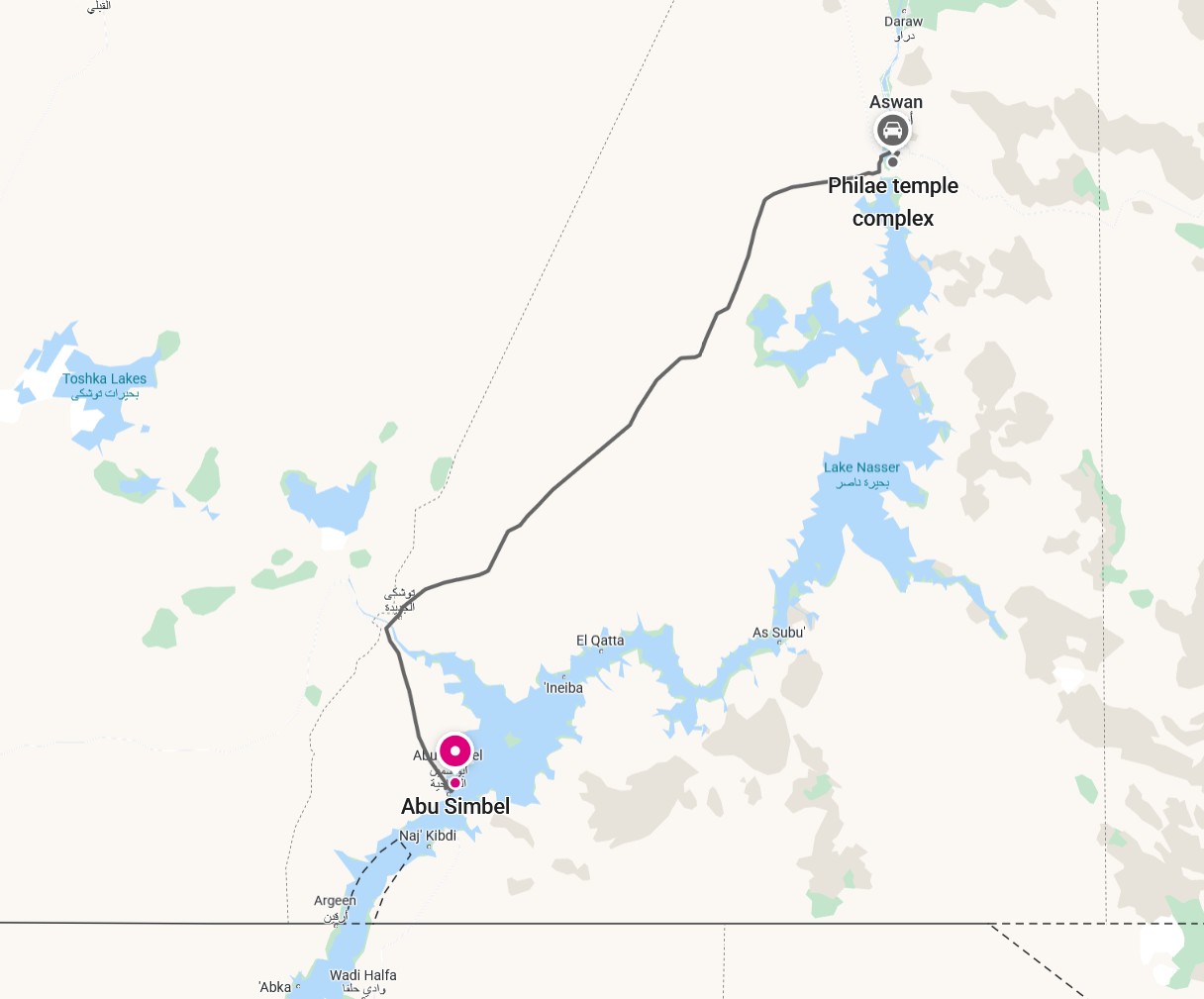About Abu Simbel
Abu Simbel, site of two temples built by the Egyptian king Ramses II (reigned 1279–13 BCE), now located in Aswan mu?afa?ah (governorate), southern Egypt. In ancient times the area was at the southern frontier of pharaonic Egypt, facing Nubia. The four colossal statues of Ramses in front of the main temple are spectacular examples of ancient Egyptian art. By means of a complex engineering feat in the 1960s, the temples were salvaged from the rising waters of the Nile River caused by erection of the Aswan High Dam.
Carved out of a sandstone cliff on the west bank of the Nile, south of Korosko (modern Kurusku), the temples were unknown to the outside world until their rediscovery in 1813 by the Swiss researcher Johann Ludwig Burckhardt. They were first explored in 1817 by the early Egyptologist Giovanni Battista Belzoni.
The 66-foot (20-metre) seated figures of Ramses are set against the recessed face of the cliff, two on either side of the entrance to the main temple. Carved around their feet are small figures representing Ramses’ children, his queen, Nefertari, and his mother, Muttuy (Mut-tuy, or Queen Ti). Graffiti inscribed on the southern pair by Greek mercenaries serving Egypt in the 6th century BCE have provided important evidence of the early history of the Greek alphabet. The temple itself, dedicated to the sun gods Amon-Re and Re-Horakhte, consists of three consecutive halls extending 185 feet (56 metres) into the cliff, decorated with more Osiride statues of the king and with painted scenes of his purported victory at the Battle of Kadesh. On two days of the year (about February 22 and October 22), the first rays of the morning sun penetrate the whole length of the temple and illuminate the shrine in its innermost sanctuary.
Britannica, The Editors of Encyclopaedia. "Abu Simbel". Encyclopedia Britannica, 6 Apr. 2021. Accessed 7 November 2021.


























